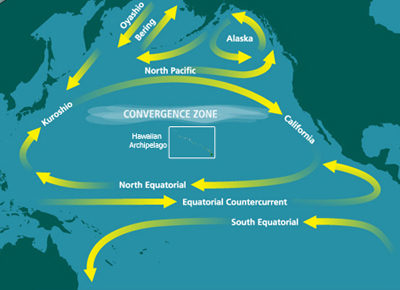|
By Washington’s Blog
|
|
| Global Research | |
The operator of the stricken Fukushima nuclear plant has been dumpingsomething like a thousand tons per day of radioactive water into the Pacificocean.Remember, the reactors are “riddled with meltdown holes”, building 4 – with more radiation than all nuclear bombs ever dropped or tested – is missing entire walls, and building 3 is a The whole complex is leaking like a sieve, and the rivers of water pumped into the reactors every day are just pouring into the ocean (with only a slight delay). Most people assume that the ocean will dilute the radiation from Fukushima enough that any radiation reaching the West Coast of the U.S. will be low. For example, the Congressional Research Service wrote in April:
And a Woods Hole oceanographer said:
But – just as we noted 2 days after the earthquake hit that the jet stream might carry radiation to the U.S. by wind – we are now warning that ocean currents might carry more radiation to the at least some portions of the West Coast of North America than is assumed. Specifically, we noted more than a year ago:
An animated graphic from the University of Hawaii’s International Pacific Research Center shows the projected dispersion of debris from Japan:
Indeed, an island of Japanese debris the size of California is hitting the West Coast of North America … and some of it is radioactive. In addition to radioactive debris, MIT says that seawater which is itself radioactive may begin hitting the West Coast within 5 years. Given that the debris is hitting faster than predicted, it is possible that the radioactive seawater will as well. And the Congressional Research Service admitted:
Indeed, nuclear expert Robert Alvarez – senior policy adviser to the Energy Department’s secretary and deputy assistant secretary for national security and the environment from 1993 to 1999 – wrote yesterday:
Because of the huge amounts of radioactive water Tepco is dumping into the Pacific Ocean, and the fact that the current pushes waters from Japan to the West Coast of North America, at least some of these radioactive “streams” or “hot spots” will likely end up impacting the West Coast. |
|





